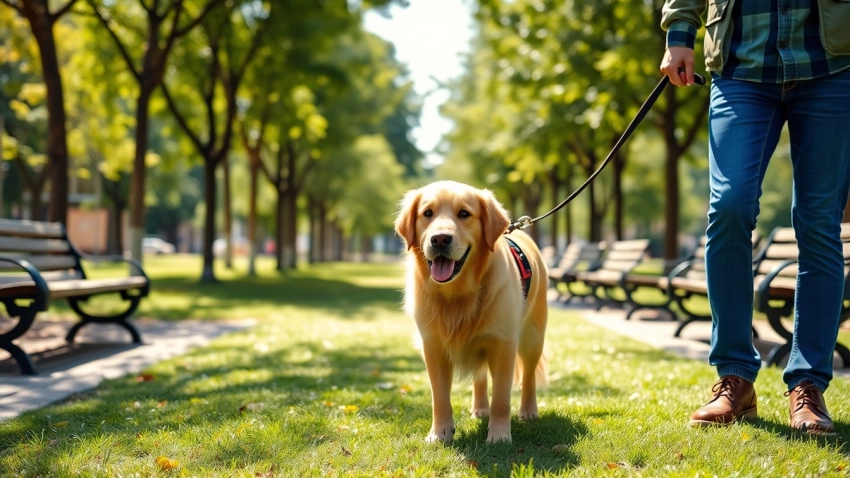
Understanding Service Dogs: Importance, Training, and Benefits
Introduction to Service Dogs
Service dogs play a significant role in enhancing the lives of individuals with disabilities. These specially trained canines are not just pets; they are integral partners that assist individuals in performing daily activities. With an unwavering bond between humans and their service dogs, these canines have paved the way for greater independence, dignity, and overall quality of life for many.
What are Service Dogs?
Service dogs are defined as dogs specifically trained to perform tasks for individuals with disabilities. This definition broadly encompasses any breed or size of dog that has undergone extensive training to assist its handler in daily life. Unlike emotional support or therapy dogs, which provide comfort through companionship, service dogs carry out tasks that directly assist their owners with varied disabilities, from physical impairments to psychiatric conditions.
History and Evolution of Service Dogs
The concept of service dogs can be traced back to the early 20th century when they were primarily used to assist veterans returning from World War I. The bond between humans and dogs grew as it became evident that dogs could be trained to assist those in need. The current understanding gained legislative support, leading to the enactment of laws that promote the rights and recognition of service dogs. Over the decades, as awareness of various disabilities increased, so did the realization of how service dogs could benefit individuals in a myriad of ways.
Legal Definitions and Rights of Service Dogs
Under the Americans with Disabilities Act (ADA), service dogs are recognized as highly trained animals that perform specific tasks for their handlers. This protection grants service dogs the right to accompany their handlers in public places, including restaurants, stores, and public transportation. However, it is essential to understand the differentiation between service dogs and therapy or emotional support animals, which do not share the same legal rights under the ADA. Knowing the legal definitions helps both handlers and the public navigate the unique relationship between service dogs and their owners.
Types of Service Dogs
Guide Dogs for Visually Impaired
Guide dogs are perhaps the most recognized type of service dogs. Specifically trained to assist individuals who are blind or visually impaired, these dogs help navigate surroundings safely. Through meticulous training, guide dogs learn to avoid obstacles, locate curbs, and help their handlers cross streets safely. The partnership fosters trust and independence, allowing individuals to travel confidently through various environments.
Hearing Assistance Dogs
Hearing assistance dogs are trained primarily for individuals who are deaf or hard of hearing. These dogs alert the handler to important sounds, such as doorbells, alarms, or even the call of a name. They act as a critical link to the auditory world, enabling better navigation and safety in public and private spaces. The bond formed with a hearing assistance dog extends beyond practicality, embodying a deeper connection that promotes emotional support and security.
Medical Alert and Support Dogs
Medical alert dogs can assist individuals with specific health conditions, such as diabetes, epilepsy, or psychiatric disorders. For instance, diabetic alert dogs can sense blood sugar fluctuations and notify their handlers before they reach dangerous levels. Similarly, seizure alert dogs are trained to detect and respond to seizures. These dogs not only play a life-saving role but also enhance the handler’s confidence in managing their condition.
Training Service Dogs
Fundamental Training Techniques
Training a service dog is an extensive and ongoing process that demands both time and dedication. The foundation of training often includes basic obedience commands before progressing to specialized tasks tailored to the handler’s needs. Techniques include positive reinforcement, consistency in commands, and patience. Handlers often work alongside trainers to ensure a cohesive bond is developed through mutual understanding and trust.
Specialized Tasks for Specific Disabilities
Each service dog is trained to perform specific tasks that address their handler’s unique challenges. For example, a psychiatric service dog may provide pressure therapy during anxiety attacks or alert their handler to potential triggers. Training intricacies are tailored to align with the specific conditions and requirements of the handler, ensuring that the service dog is fully equipped to provide the necessary support.
Certification and Registration Processes
While there is no official registration for service dogs recognized by the ADA, handlers may choose to obtain certification through various organizations to signify that their dog has been trained for service work. This certification can help facilitate smoother interactions in public spaces, but it is important to understand that the presence of documentation does not define a service dog’s legal rights.
Benefits of Having Service Dogs
Physical Assistance and Mobility Support
For many individuals, the primary benefit of having a service dog lies in the physical assistance they provide. Service dogs are trained to help with mobility challenges by facilitating tasks such as retrieving dropped items, opening doors, or assisting with balance issues. This support can significantly enhance the handler’s independence, making everyday tasks more manageable.
Mental Health Benefits: Reducing Anxiety and Depression
The emotional and mental health benefits of service dogs cannot be overlooked. Numerous studies have indicated that the presence of a service dog can help reduce feelings of anxiety and depression. Dogs offer unwavering companionship, which can alleviate feelings of loneliness. Furthermore, the structured routine involved in caring for a dog can contribute to positive mental health outcomes, fostering a sense of purpose and responsibility.
Enhancing Independence and Quality of Life
Ultimately, service dogs empower individuals to lead more fulfilling lives. By assisting with daily activities, they enhance the quality of life, promote independence, and encourage social engagement. The mutual bond and understanding between handler and service dog provide a unique emotional support system, fostering personal growth and resilience.
Getting a Service Dog
How to Apply for a Service Dog?
Obtaining a service dog is a structured process that typically begins with an assessment of the individual’s needs and lifestyle. Individuals may consult healthcare professionals to obtain recommendations, followed by applications at service dog organizations. Interviews, home evaluations, and collaboration within the training program may all be part of the journey to pairing with an appropriate service dog.
Cost and Funding Options
The financial aspect of obtaining a service dog can vary widely. Costs associated with training, certification, and ongoing healthcare can be significant. However, various funding options are often available, including grants or financial assistance from nonprofit organizations. Additionally, some individuals opt for fundraisers or community support to help cover costs. Understanding these avenues can be crucial when considering the investment in a service dog.
Training and Ongoing Support for Handlers
Once a service dog is placed with a handler, the journey does not end; ongoing training and support remain critical. Handlers should continue working with their dogs to reinforce training, while also learning how to advocate for their rights in public spaces. Community resources, online forums, and regular training sessions can help maintain the bond and ensure the service dog fulfills its role effectively.












Leave a Reply